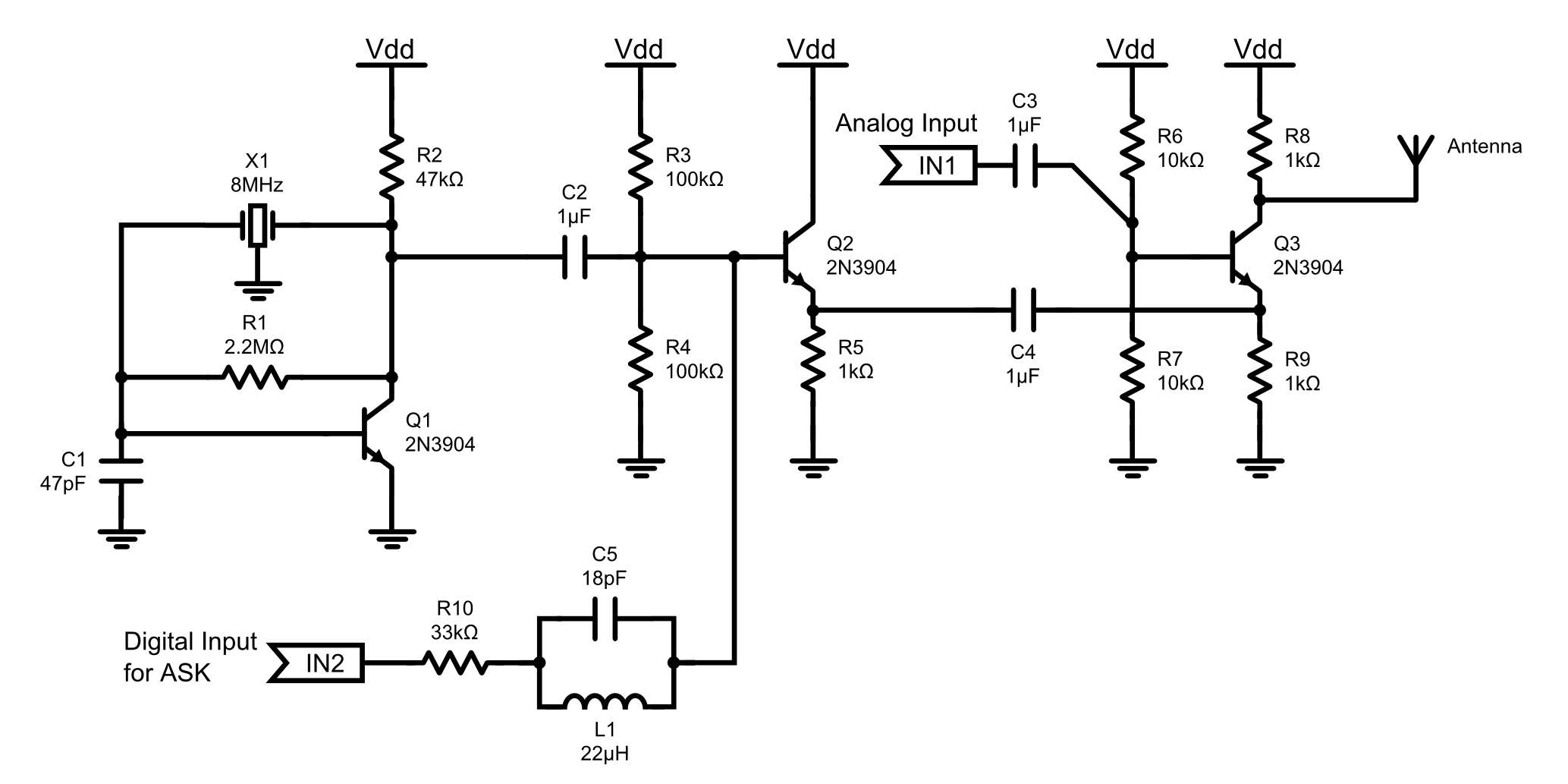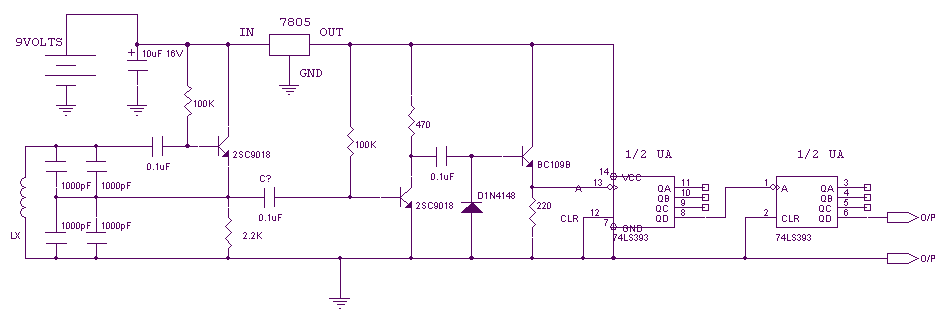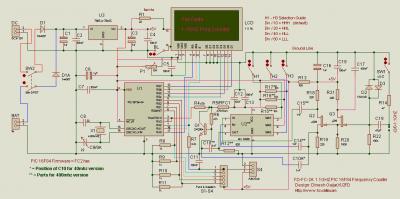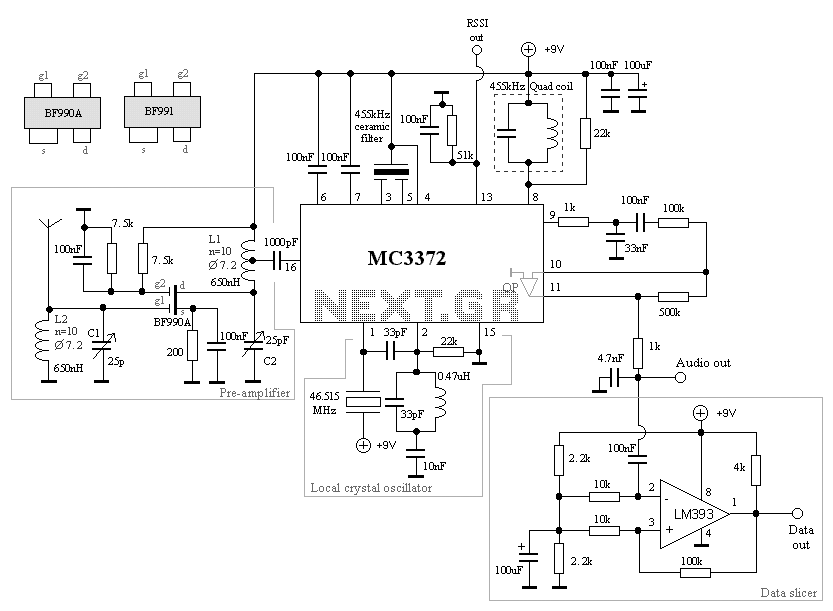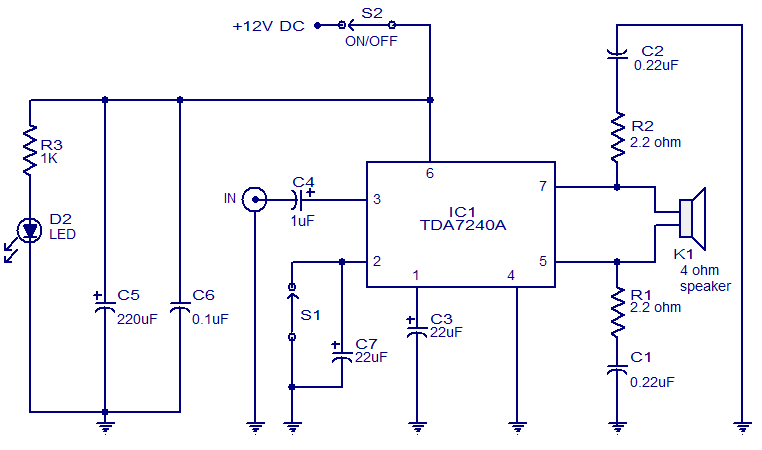
8 MHz frequency meter using AVR microcontroller
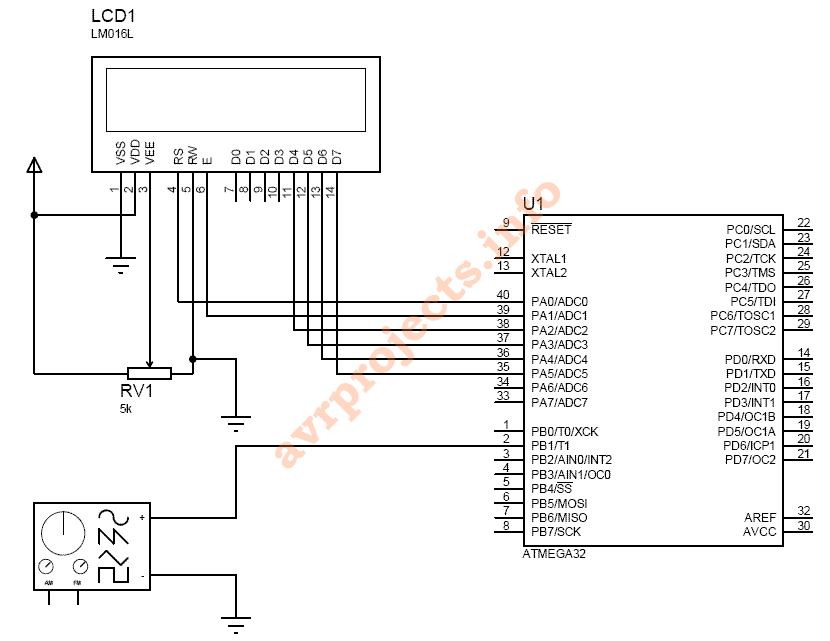
This project measures the clock pulses supplied to the Timer input of the AVR microcontroller. The Bascom code counts the clock pulses over a duration of 1 second and displays the result.
The circuit for this project primarily consists of an AVR microcontroller, a clock source, and a display unit. The microcontroller is programmed to count the number of clock pulses received at its Timer input over a specified interval, in this case, one second.
The clock source can be any signal generator or oscillator that outputs a square wave signal, which serves as the input to the Timer. The Timer input pin of the microcontroller is configured to detect the rising or falling edges of the clock pulses, depending on the specific requirements of the application.
The Bascom code is responsible for initializing the Timer and configuring the necessary registers to enable counting. It sets up an interrupt or polling mechanism to capture the clock pulses accurately. After the counting period of one second, the code retrieves the count value from the Timer register and sends it to a display unit, which can be an LCD or LED display.
The display unit is connected to the microcontroller through appropriate data and control lines, allowing it to present the counted value in a readable format. The entire system is powered by a suitable power supply, ensuring that all components operate within their specified voltage and current ratings.
In summary, this project combines microcontroller programming, hardware interfacing, and display technology to create a functional clock pulse measurement system.This project can measure the clock pulses fed to the Timer input of the AVR microcontroller. The Bascom code counts the clock pulses for 1 second and display it. 🔗 External reference
The circuit for this project primarily consists of an AVR microcontroller, a clock source, and a display unit. The microcontroller is programmed to count the number of clock pulses received at its Timer input over a specified interval, in this case, one second.
The clock source can be any signal generator or oscillator that outputs a square wave signal, which serves as the input to the Timer. The Timer input pin of the microcontroller is configured to detect the rising or falling edges of the clock pulses, depending on the specific requirements of the application.
The Bascom code is responsible for initializing the Timer and configuring the necessary registers to enable counting. It sets up an interrupt or polling mechanism to capture the clock pulses accurately. After the counting period of one second, the code retrieves the count value from the Timer register and sends it to a display unit, which can be an LCD or LED display.
The display unit is connected to the microcontroller through appropriate data and control lines, allowing it to present the counted value in a readable format. The entire system is powered by a suitable power supply, ensuring that all components operate within their specified voltage and current ratings.
In summary, this project combines microcontroller programming, hardware interfacing, and display technology to create a functional clock pulse measurement system.This project can measure the clock pulses fed to the Timer input of the AVR microcontroller. The Bascom code counts the clock pulses for 1 second and display it. 🔗 External reference
